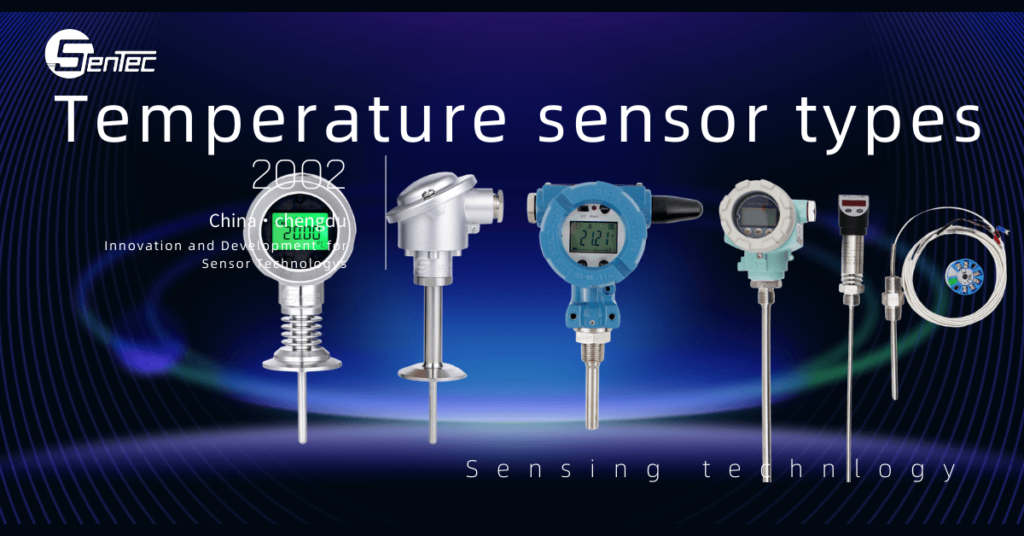The temperature sensor is a kind of sensor developed earlier and widely used with multiple temperature sensor types in the market. From the beginning of the 17th century, when Galileo invented the thermo-hygrometer, people began to measure temperature, and the sensor that really converts the temperature into an electrical signal is the thermocouple sensor invented by the German physicist Sebe in 1821.

With the continuous development of science and technology, the requirements of measurement and automation technology continue to increase, the development of temperature sensors has roughly gone through the following three stages: traditional discrete temperature sensors (including sensitive components), analog integrated temperature sensors/controllers and intelligent Temperature Sensor. At present, new temperature sensors are developing from analog to digital, from integration to intelligence and networking.
1. Temperature sensor types: Discrete temperature sensor
Thermocouple sensor is a traditional discrete sensor, which is the most widely used temperature sensor in industrial measurement. Its working principle is: According to the Seebeck effect in physics, that is, in a circuit composed of two metal wires, if the junctions maintain different temperatures, an electromotive force corresponding to this temperature difference will be generated in the circuit. The thermocouple has a simple structure, a wide temperature range, fast response, accurate measurement and good reproducibility. It can also measure the temperature of the micro-area with a thin even wire, and does not require a power supply.
2. Temperature sensor types:Integrated temperature sensor
(1) Analog integrated temperature sensor
The integrated sensor is made by silicon semiconductor integration process, so it is also called silicon sensor or monolithic integrated temperature sensor. The analog integrated temperature sensor came out in the 1980s. It is a special IC that integrates the temperature sensor on a chip and can complete the functions of temperature measurement and analog signal output. The main features of the analog integrated temperature sensor are single function (only temperature measurement), small temperature measurement error, low price, fast response speed, long transmission distance, small size, micro power consumption, etc. Non-linear calibration is required, and the peripheral circuit is simple. It is the most commonly used integrated sensor at home and abroad.
(2) Analog integrated temperature controller
The analog integrated temperature controller mainly includes temperature control switch and programmable temperature controller. Some enhanced integrated temperature controllers also include A/D converters and cured programs, which have some similarities with smart temperature sensors. But it is a self-contained system, and it is not controlled by the microprocessor when working, which is the main difference between the two.
3. Temperature sensor types:Intelligent temperature sensor
Smart temperature sensors (also known as digital temperature sensors) were introduced in the mid-1990s. It is the crystallization of microelectronic technology, computer technology and automatic test technology (ATE). At present, a variety of intelligent temperature sensor series products have been developed internationally. The intelligent temperature sensor contains temperature sensor, A/D converter, signal processor, memory (or register) and interface circuit. Some products also have multiplexers, central controller (CPU), random access memory (RAM) and read only memory (ROM). The characteristic of the intelligent temperature sensor is that it can output temperature data and related temperature control quantities, and adapt to various microcontrollers (MCU); and it realizes the test function through software on the basis of hardware, and its intelligence also depends on the degree of intelligence. at the level of software development.
After entering the 21st century, intelligent temperature sensors are developing rapidly in the direction of high-precision, multi-function, bus standardization, high reliability and security, development of virtual sensors and network sensors, and development of single-chip temperature measurement systems. With the introduction of a series of policies and measures that are conducive to the development of the temperature sensor industry, the temperature sensor industry will usher in huge development opportunities in the future.




